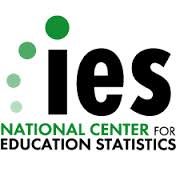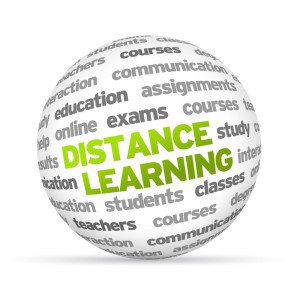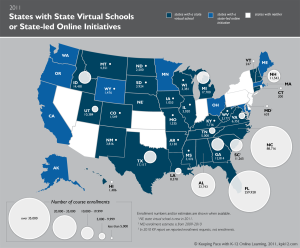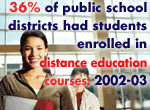K-12 Online Education
In November of 2011, the National Center for Education Statistics (NCES) 2012-U.S. DEPARTMENT OF EDUCATION released their report on distance learning in U.S. public schools. The report “Distance Education Courses for Public Elementary and Secondary School Students” is based on self-reported data from public school districts for the 12-month 2009–10 school year.
Fifty-five percent of public school districts reported having students enrolled in distance education courses in 2009–10. Among those districts, 96 percent reported having students enrolled in  distance education courses at the high school level, 19 percent at the middle or junior high school level, 6 percent at the elementary school level, and 4 percent in combined or ungraded schools. Combined or ungraded schools are those in which the grades offered in the school span elementary and secondary grades or they are not divided into grade levels. In survey questions that asked respondents to report by instructional level, the grade ranges were not defined for district respondents.
distance education courses at the high school level, 19 percent at the middle or junior high school level, 6 percent at the elementary school level, and 4 percent in combined or ungraded schools. Combined or ungraded schools are those in which the grades offered in the school span elementary and secondary grades or they are not divided into grade levels. In survey questions that asked respondents to report by instructional level, the grade ranges were not defined for district respondents.
Districts reported an estimated 1,816,400 enrollments in distance education courses for 2009–103 Seventy-four percent of the distance education enrollments were in high schools, 9 percent were in middle or junior high schools, and 4 percent were in elementary schools. If a student was enrolled in multiple courses, districts were instructed to count the student for each course in which he or she was enrolled. Thus, course enrollments may include duplicated counts of students.
Seventy-nine percent of districts with students enrolled in distance education courses reported enrollments of 100 or fewer students, with 25 percent reporting 1 to 10 enrollments, 27 percent reporting 11 to 30 enrollments, and 27 percent reporting 31 to 100 enrollments (table 3).
Seven percent of districts reported tracking all distance education courses that students completed with a passing grade, 79 percent reported tracking all distance education courses that students completed with a failing grade, and 65 percent reported tracking all distance education courses where students withdrew prior to completing the course .
 Ninety-eight percent of districts reported monitoring student progress in distance education courses using a final grade report. Districts also reported monitoring student progress by completion and submission of assignments (80 percent), interim course grades (75 percent), attendance reports (70 percent), log-on activity (56 percent), and time spent online (49 percent).
Ninety-eight percent of districts reported monitoring student progress in distance education courses using a final grade report. Districts also reported monitoring student progress by completion and submission of assignments (80 percent), interim course grades (75 percent), attendance reports (70 percent), log-on activity (56 percent), and time spent online (49 percent).
Twelve percent of districts reported having written policies specifying that a student cannot enroll in another distance education course when a distance education course was not successfully completed, while 6 percent of districts reported having policies specifying that a student must wait a specified time before enrolling in another distance education course.
Twenty-two percent of districts with students enrolled in distance education courses reported that students enrolled in regular high school programs could take a full course load in an academic term using only distance education courses, while 12 percent reported that students could fulfill all high school graduation requirements using only distance education courses.
Fifty percent of districts reported that a postsecondary institution in the United States delivered distance education courses in which students in their district were enrolled. Other reported entities delivering distance education included independent vendors in the United States (47 percent) and a state virtual school in their state (33 percent). Seventy-five percent of districts reported that all distance education courses were developed by entities other than their district. A state virtual school is one where state-centralized K-12 courses are available through the Internet or web-based methods.
district were enrolled. Other reported entities delivering distance education included independent vendors in the United States (47 percent) and a state virtual school in their state (33 percent). Seventy-five percent of districts reported that all distance education courses were developed by entities other than their district. A state virtual school is one where state-centralized K-12 courses are available through the Internet or web-based methods.
Districts reported that the types of distance education courses in which students enrolled were credit recovery (62 percent), dual enrollment (47 percent), Advanced Placement (29 percent), career and technical education (27 percent), and other types of academic courses (65 percent). Credit recovery courses include opportunities allowing students to recover course credits from classes they have missed or failed. Dual enrollment courses are college-level courses for which students receive both high school and college credits. Other types of academic courses include core courses and electives.
The majority of districts reported that providing courses not otherwise available at the school (64 percent) and providing opportunities for students to recover course credits from classes missed or failed (57 percent) were very important reasons for having distance education courses in their district. Reasons for having distance education is that districts reported as not important included, addressing school space limitations (82 percent), and generating more district revenues (82 percent).
 Fifty-nine percent of districts reported having students enrolled in courses that used the Internet with asynchronous (not simultaneous) instruction to a large extent, with an additional 27 percent reporting having students enrolled in courses that used this technology to a small or moderate extent. This makes the Internet with asynchronous instruction the most widely used technology for the instructional delivery of distance education courses. In contrast, more than half of the districts indicated not using each of the other technologies at all to deliver distance education courses, with 73 percent reporting not using one-way prerecorded video, 65 percent not using computer-based technologies other than the Internet, 59 percent not using two-way interactive video, and 52 percent not using the Internet with synchronous (simultaneous) instruction.
Fifty-nine percent of districts reported having students enrolled in courses that used the Internet with asynchronous (not simultaneous) instruction to a large extent, with an additional 27 percent reporting having students enrolled in courses that used this technology to a small or moderate extent. This makes the Internet with asynchronous instruction the most widely used technology for the instructional delivery of distance education courses. In contrast, more than half of the districts indicated not using each of the other technologies at all to deliver distance education courses, with 73 percent reporting not using one-way prerecorded video, 65 percent not using computer-based technologies other than the Internet, 59 percent not using two-way interactive video, and 52 percent not using the Internet with synchronous (simultaneous) instruction.
The technology most frequently cited by districts as the primary mode of instructional delivery for the greatest number of distance education courses was the Internet using asynchronous instruction (63 percent) (table 12).
Ninety percent of districts with distance education enrollments reported having students enrolled in distance education courses delivered over the Internet. Among those districts, 9241 percent reported that students accessed internet-delivered courses at school, 78 percent reported that students accessed these courses at home, and 15 percent reported that students accessed these courses at some other location (e.g., public library or community center).
About three-quarters (74 percent) of the districts with distance education enrollments in 2009–10 indicated that they planned to expand the number of distance education courses offered in the next 3 years. Fourteen percent of the districts reported that they delivered distance education courses to students not regularly enrolled in the district (e.g., students from other districts, private school students, or homeschooled students).

Recent Comments